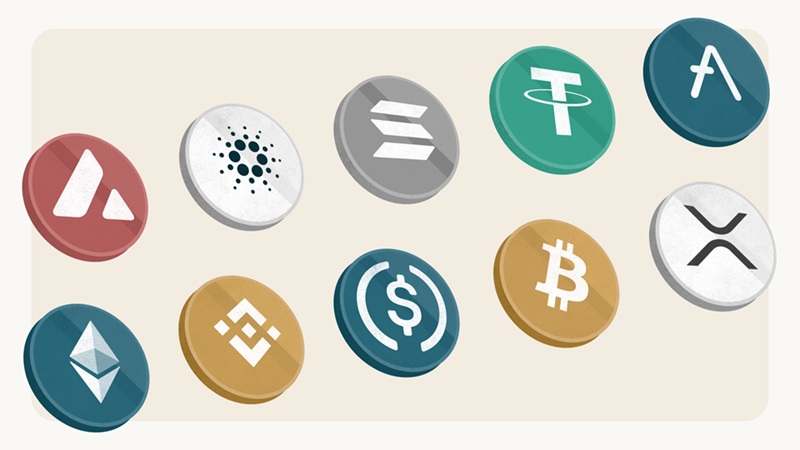
In the ever-evolving world of cryptocurrencies, understanding the jargon can be a challenge for newcomers. Whether you’re exploring digital assets, trading platforms, or blockchain technology, familiarizing yourself with common cryptocurrency terminology on Bitstamp is crucial. From “altcoins” to “blockchain,” this post will clarify essential terms and make you feel more confident in navigating the cryptocurrency landscape.
Introduction to Cryptocurrency Terms
Cryptocurrency has revolutionized the world of finance, but with innovation comes a host of new terminology that may seem confusing, especially to beginners. As a digital asset class, crypto introduces a whole new set of concepts, from blockchain technology to decentralized finance (DeFi), and everything in between.
At CryptoExlist, we believe that education is key to unlocking the full potential of cryptocurrency. That’s why we’ve compiled this blog to help both novice and seasoned users navigate the cryptic language of digital currencies. Whether you’re a crypto investor, developer, or enthusiast, understanding the following terms will provide you with a solid foundation to engage in the ever-growing world of cryptocurrencies.

What is Cryptocurrency?
Before diving into specific terms, it’s essential to have a solid understanding of what cryptocurrency is. Simply put, cryptocurrency is a digital or virtual form of money that uses cryptography for security. Unlike traditional currencies, which are issued by central banks, cryptocurrencies operate on decentralized networks, often based on blockchain technology.
Key Components of Cryptocurrency:
- Blockchain: A distributed ledger technology that records transactions across multiple computers in a way that ensures transparency and security.
- Decentralization: A key principle in the crypto space where no single authority has control, making the system less vulnerable to manipulation or failure.
- Cryptography: The practice of securing information, ensuring privacy and security in the digital world.
Understanding these foundational concepts will make it easier to grasp the more technical terms in cryptocurrency.
Key Cryptocurrency Terms Every Beginner Should Know
The world of cryptocurrencies has its own language, and knowing these key terms can make your crypto journey much smoother. Let’s start by exploring some of the most important terms that every beginner should know.

Blockchain
Blockchain is often referred to as the backbone of cryptocurrencies. It’s a decentralized and distributed ledger technology that securely records transactions across many computers in a way that prevents tampering and fraud.
Altcoins
“Altcoins” is a term used to describe all cryptocurrencies other than Bitcoin. While Bitcoin is the first and most popular cryptocurrency, thousands of altcoins have emerged, each with its unique features and use cases. Examples include Ethereum, Litecoin, Ripple (XRP), and Cardano.
Wallet
A cryptocurrency wallet is a software application or hardware device that stores your private keys and allows you to send and receive cryptocurrencies. There are two main types of wallets: hot wallets (connected to the internet) and cold wallets (offline storage for added security).
Exchange
A cryptocurrency exchange is a platform where users can buy, sell, and trade digital currencies. Some popular exchanges include Binance, Coinbase, and Kraken. Bitstamp is another well-known exchange that allows users to trade a wide range of cryptocurrencies securely.
Advanced Cryptocurrency Terms to Expand Your Knowledge
As you dive deeper into the world of crypto, you’ll encounter more technical terms that are crucial for understanding the advanced aspects of the industry. Let’s break down some of these terms:

DeFi (Decentralized Finance)
DeFi refers to a movement aimed at creating a decentralized financial system using blockchain technology. It enables users to access financial services such as lending, borrowing, and trading without relying on traditional financial institutions like banks.
Smart Contracts
Smart contracts are self-executing contracts with the terms of the agreement directly written into code. They automatically execute actions when predefined conditions are met, making transactions more efficient and transparent.
Proof of Work (PoW) and Proof of Stake (PoS)
These are two common consensus mechanisms used in blockchain networks to validate transactions and secure the network.
- Proof of Work (PoW): This mechanism requires participants (miners) to solve complex mathematical puzzles to validate transactions and add blocks to the blockchain.
- Proof of Stake (PoS): In PoS, participants (validators) are chosen to create new blocks based on the number of coins they hold and are willing to “stake” as collateral.
Both of these mechanisms have their own strengths and weaknesses, but understanding them is essential for grasping how different cryptocurrencies function.
Forks
In the world of cryptocurrency, a “fork” occurs when a blockchain splits into two separate chains, usually due to disagreements within the community about protocol changes. This can result in the creation of a new cryptocurrency. A well-known example is Bitcoin Cash, which was created as a result of a Bitcoin fork.
Trading Terms You Should Know
If you’re planning to dive into cryptocurrency trading, it’s essential to understand the key terms used by traders. These terms provide insight into market behaviors, help you identify potential trading strategies, and offer a clearer view of the crypto market’s general direction. Familiarity with the jargon can boost your confidence and decision-making ability when navigating the crypto world.

Bull Market vs Bear Market
When trading cryptocurrencies, you’ll frequently encounter the terms “bull market” and “bear market.”
- Bull Market: This is a period where the prices of cryptocurrencies are rising or there’s an expectation they will rise. Traders often look for opportunities to buy during a bull market, anticipating higher future returns.
- Bear Market: This refers to a time when the prices of cryptocurrencies are falling or are expected to continue dropping. In a bear market, traders may focus on strategies to minimize losses or even short-sell.
Being able to recognize whether the market is in a bull or bear phase is crucial for making informed and profitable decisions in crypto trading.
Liquidity
Liquidity is an important concept in cryptocurrency trading. It refers to how easily an asset can be bought or sold without causing significant price fluctuations. High liquidity means you can quickly buy or sell a cryptocurrency without greatly affecting its price. Liquidity varies from one cryptocurrency to another and can differ depending on the exchange. Understanding liquidity can help you execute trades efficiently and at the right price.
Market Cap
Market capitalization (market cap) is one of the most important metrics for evaluating a cryptocurrency. It represents the total market value of a cryptocurrency, calculated by multiplying the current price by the total number of coins in circulation. A higher market cap often indicates that a cryptocurrency is well-established and has growth potential. Market cap is also used to classify cryptocurrencies into different categories, such as large-cap, mid-cap, or small-cap coins.
HODL
“HODL” is a popular term in the cryptocurrency world that signifies holding onto your cryptocurrency investments for the long term instead of selling them off. It originated from a misspelling of the word “hold” in a 2013 forum post, and since then, it has evolved into a widely embraced philosophy. HODLing suggests confidence in the long-term potential of a cryptocurrency, especially during times of market volatility, and encourages traders to stay patient and wait for future gains.
The Importance of Understanding Cryptocurrency Terminology
As you can see, the cryptocurrency space is full of complex terms and jargon. However, mastering these terms is essential for anyone looking to participate in the crypto market, whether for investment, development, or research.
By familiarizing yourself with terms like “blockchain,” “altcoins,” and “smart contracts,” you’ll be better equipped to navigate the crypto world confidently. Moreover, understanding trading-specific terms such as “market cap” and “liquidity” will help you make smarter investment decisions.
At CryptoExlist, we are committed to helping you stay informed about the latest in cryptocurrency. We hope this guide has cleared up some of the confusion surrounding common crypto terms and made it easier for you to understand the basics of the digital asset world.
Conclusion
The cryptocurrency industry is full of terms that can be confusing at first, but with time and study, you’ll find that these concepts become second nature. Whether you’re just starting out or looking to deepen your understanding, knowing key cryptocurrency terminology is essential for success in the world of digital currencies. Keep this guide handy.
By mastering cryptocurrency terms, you’ll be well on your way to becoming a savvy participant in this dynamic space. Stay informed, stay updated, and continue learning to make the most of the opportunities the world of cryptocurrency has to offer.























